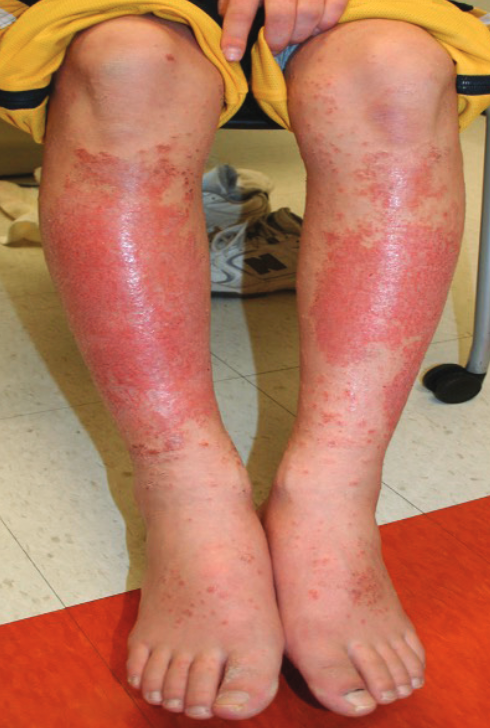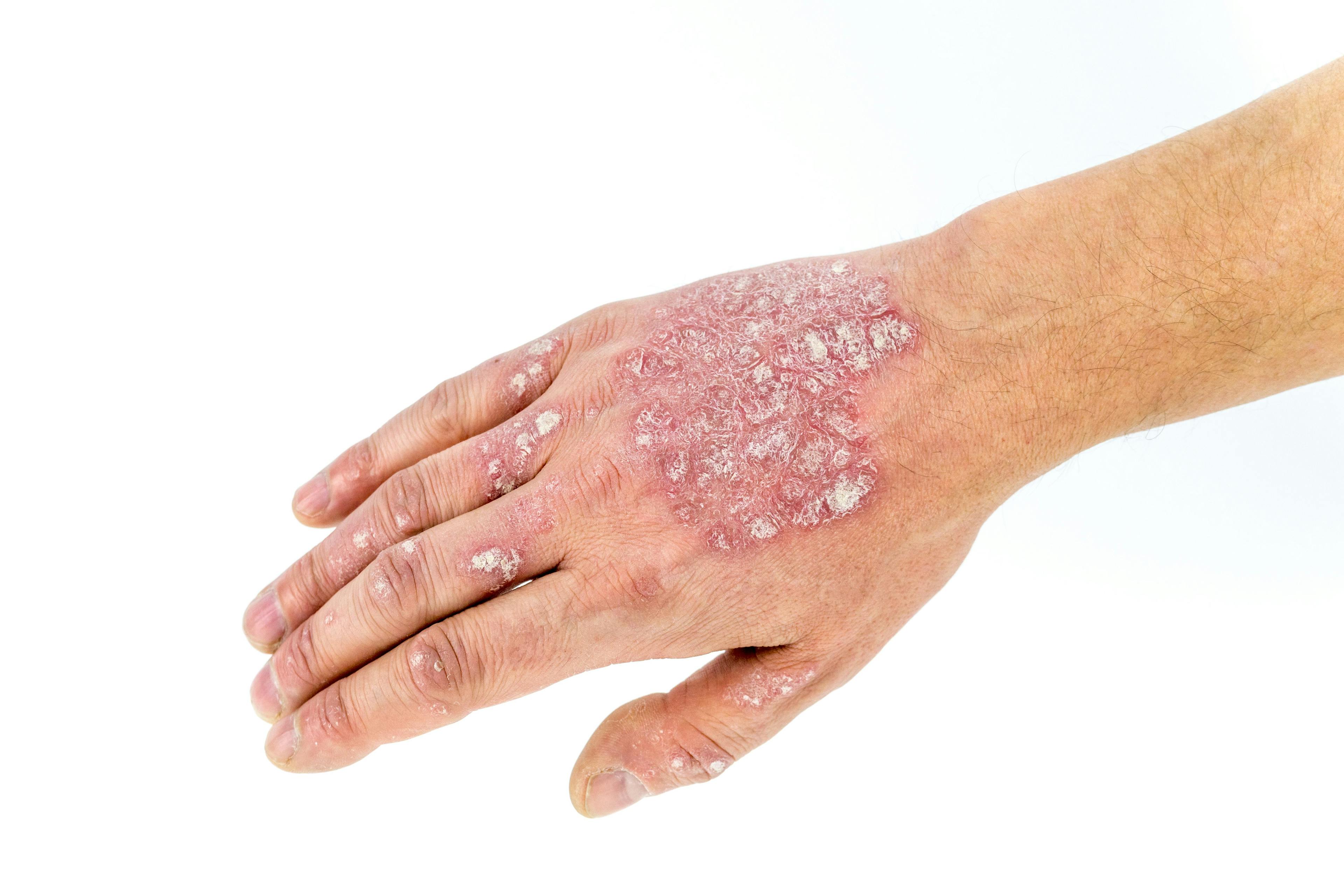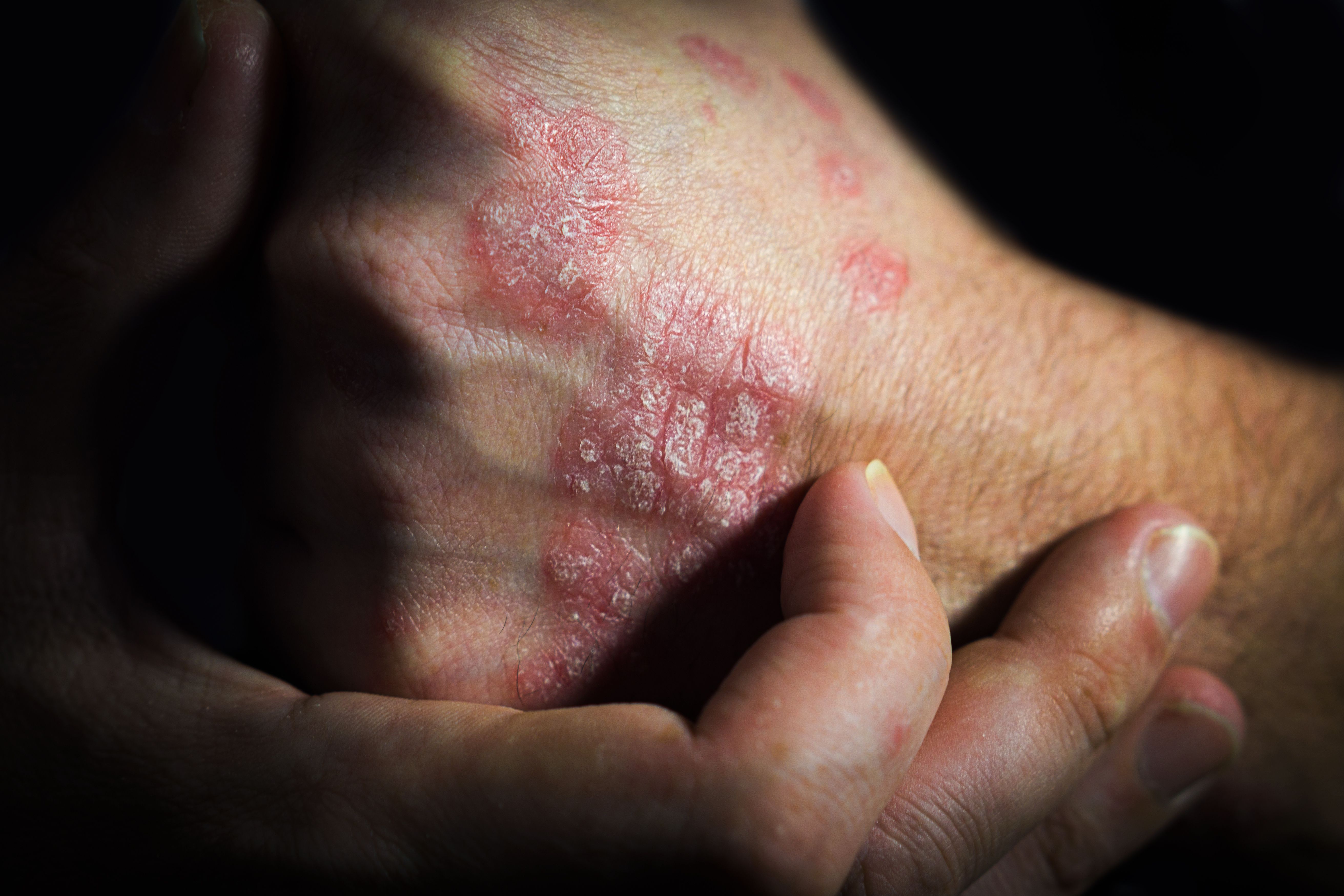- Acne
- Actinic Keratosis
- Aesthetics
- Alopecia
- Atopic Dermatitis
- Buy-and-Bill
- COVID-19
- Case-Based Roundtable
- Chronic Hand Eczema
- Chronic Spontaneous Urticaria
- Drug Watch
- Eczema
- General Dermatology
- Hidradenitis Suppurativa
- Melasma
- NP and PA
- Pediatric Dermatology
- Pigmentary Disorders
- Practice Management
- Precision Medicine and Biologics
- Prurigo Nodularis
- Psoriasis
- Psoriatic Arthritis
- Rare Disease
- Rosacea
- Skin Cancer
- Vitiligo
- Wound Care
Publication
Article
Dermatology Times
Transcriptomics May Help Revolutionize Psoriasis Treatment Using Precision Medicine
Author(s):
The amount of transcriptomic data available for psoriasis may prove helpful in treating the condition through a precision medicine approach.
Researchers evaluated the importance of transcriptional profiling techniques in identifying underlying molecular pathways of psoriasis. After assessing several studies, the review emphasizes that analyzing RNA alternative isoforms is essential in designing personalized treatment strategies to improve clinical outcomes1.
Psoriasis is an autoimmune inflammatory skin condition with visible signs of inflammation, including cutaneous erythema and scaly skin. It accelerates the process of skin cell production, leading to painful and itchy scaly plaques.
The global prevalence rate of the condition varies and ranges from 0.09% to 11.4%. The disease affects more than 7.5 million adults in the United States, accounting for more than 3% of the US adult population2. About 90% of people with psoriasis contract its most common form, psoriasis vulgaris.
Psoriasis is widely considered an immune-mediated disease in which an overactive immune system speeds up skin growth. Normally keratinocytes grow and shed in a month, maintaining epidermal homeostasis. This balance is impaired in inflammatory diseases like psoriasis, and the keratinocytes, instead of shedding off, pile up on the skin surface, making it scaly and increasing the burning sensation.
Psoriasis is not contagious thus cannot spread among people; however, the inflammation may spread from one body part to another. According to a study, people with psoriasis have an increased risk of developing at least one autoimmune condition in their lifetime3. Though the pathogenesis of these comorbid conditions remains unclear, shared inflammatory pathways, genetic susceptibility, and cellular mediators are some contributing factors.
Although the exact etiology of psoriasis remains unknown, it is widely recognized as a multifactorial disease caused by an interaction between environmental triggers and inherited genes. Having a family history increases the likelihood of contracting the disease.
The current review is published in the International Journal of Molecular Sciences. It focused on the findings of large cohort transcriptomic analyses. The review looks at the benefits of such studies in identifying underlying molecular pathways of the disease and detecting therapeutic targets and biomarkers for psoriasis treatment.
The findings reported several differentially expressed genes (DEG), which are potential targets for further research and treatment strategies. Evidence suggests that genes are differentially expressed in psoriatic versus healthy skin.
Several genome-wide association studies have helped researchers identify underlying immunological dysfunction driven by immune cells and pro-inflammatory cytokines, showing a strong association between disease severity and cytokine levels. The pathway is now targeted by modern biologics that show commendable results. To date, about 63 psoriasis susceptibility loci have been identified, highlighting the role of NFκB and interferon pathways and helping with understanding the pathogenesis of the disease.
The epidermal differentiation complex (EDC) encodes genes associated with epidermal differentiation. Since impairment in epidermal differentiation is the main psoriatic feature, EDC genes are among the important psoriatic markers.
While explaining the benefits of transcriptomics, Bernard Cohen, MD, professor of pediatrics and dermatology at the John Hopkins University School of Medicine, said, “In addition to allowing for identification of specific triggers of psoriasis, the transcriptome allows us to pick therapies that are safe for specific patients and have a low risk of triggering complications like associated gastrointestinal and rheumatological disorders. This also allows us to minimize the risk of immunosuppression as a complication of therapy.”
The review also focused on alternative splicing of mRNAs, which has previously received little to no attention in the field. Evidence suggests that nearly 95% of genes undergo alternative splicing. It is a fundamental regulatory mechanism of gene expression, which can generate different isoforms from pre-mRNA by arranging exons at different combinations. The isoforms from a single gene can lead to the production of different protein variants, impacting gene function through various mechanisms.
A study by Li et al. found 18 exon-skipping events and several factors that regulate splicing in psoriasis4, which are potential candidates for further research aimed at designing personalized therapies for psoriasis treatment.
Regarding mRNA alternative splicing Cohen said, “It allows us to identify specific inflammatory mediators and to target them with specific therapies. By targeting specific inflammatory mediators, we can reduce the risk of immunosuppression triggered by many treatments.”
Another study suggested an association between S100A7 and inflammatory skin diseases, such as psoriasis and atopic dermatitis5. Among 21 low molecular weight S100 proteins, 14 S100 protein genes are located in EDC on chromosome 1q21, and 11 are expressed in the epidermis. The S100A7A/A15 (Koebnerisin) protein, with two alternative spliced isoforms, is overexpressed in psoriasis and is among the important markers in psoriasis.
Another example is Caspase recruitment domain family member 14 (CARD14), an activator of NFκB within the epidermis. The splicing variants of CARD14 produce protein variants, affecting NFκB activation differently. Hence RNA isoform-based analysis helps identify multiple transcripts for a gene and is important to design new treatment strategies for psoriasis.
Recent studies investigated transcriptomic changes in the blood and found neutrophils to be the potential hallmark in the pathogenesis of the disease.
Previously a generalized approach was used to treat the condition depending on clinical assessments. However, a more precise strategy is needed, considering patients’ genes, environmental factors, and lifestyle, to improve clinical outcomes for individual patients.
The huge amount of transcriptomic data available for psoriasis may prove helpful in treating the condition through a precision medicine approach. The data may also help predict the effects of drugs, thereby reducing the trial-and-error approach to the available biologics and inducing the efficacy of the treatment.
References:
- Krishnan VS, Kõks S. Transcriptional Basis of Psoriasis from Large Scale Gene Expression Studies: The Importance of Moving towards a Precision Medicine Approach. Int J Mol Sci. 2022; 23(11):6130. https://doi.org/10.3390/ijms23116130
- Armstrong AW, Mehta MD, Schupp CW, Gondo GC, Bell SJ, Griffiths CEM. Psoriasis Prevalence in Adults in the United States. JAMA Dermatol. 2021;157(8):940-946. doi:10.1001/jamadermatol.2021.2007
- Takeshita J, Grewal S, Langan SM, et al. psoriasis and comorbid diseases: Epidemiology. J Am Acad Dermatol. 2017;76(3):377-390. doi:10.1016/j.jaad.2016.07.064
- Li J, Yu P. Genome-wide transcriptome analysis identifies alternative splicing regulatory network and key splicing factors in mouse and human psoriasis. Sci Rep. 2018;8(1):4124. Published 2018 Mar 7. doi:10.1038/s41598-018-22284-y
- Broome AM, Ryan D, Eckert RL. S100 protein subcellular localization during epidermal differentiation and psoriasis. J Histochem Cytochem. 2003;51(5):675-685. doi:10.1177/002215540305100513

Newsletter
Like what you’re reading? Subscribe to Dermatology Times for weekly updates on therapies, innovations, and real-world practice tips.
























